Tirana is one of those European capitals that is hard to like at first sight. Of course, one cannot say that the city is beautiful, but nevertheless, there is something about it that makes one want to return there.
The Albanian capital has a wonderful atmosphere, full of energy and hope, and a distinctly Mediterranean vibe in the air. The former bastion of communism is becoming more and more cosmopolitan. The streets buzz with life from morning until late at night. Residents hang out in the many cafes and restaurants. After work, they go for walks, which in Albania are called xhiro, and in the evenings, they gather in the main square of Skanderbeg, where various musicians and dancers often appear.

The cityscape is also changing very dynamically. These days, Tirana is trying to break with the image of a dirty, gray city after the Soviet Union – buildings are being painted in bright colors and their facades are being restored. There is still a lot of architectural chaos in all this, but you can see numerous renovations and new buildings and skyscrapers springing up like mushrooms after the rain.
Tirana – practical information
- Keep in mind that Albanians nod their heads up and down when they want to refute something, and turn left and right when they agree.
- Politics and history are separate topics, as they are quite vivid and often commented on in this country. Therefore, one should not engage in political discussions with strangers, especially about the war in the Balkans.

How many days does it take to explore Tirana?
Many travelers to Albania don’t spend too much time exploring Tirana. The capital is small, and one day is probably enough to see its most important sights, but many locals say that is definitely too little. They recommend staying at least 3-4 days in the city. In our opinion, a longer stay will allow you not only to get to know Tirana better, but also to feel its unique atmosphere.
How to get around in Tirana?
The area of Tirana is only 42 km2. Most sights can be reached on foot if you find accommodation in the city center. The only places worth getting to by public transport or by car are the ski elevator and the Bunk’Art 1 museum in the Film Studio area.

Food
Albanian cuisine is typical of the Balkans, with some differences. Here you can try meat dishes like qoftë or kebab. Rice is also popular and can be found in pilaf or in the dessert oriz më tamel. As for alcohol, Skanderbeg brandy, rakija and Birra Tirana beer are popular. Read more about traditional Albanian food here…
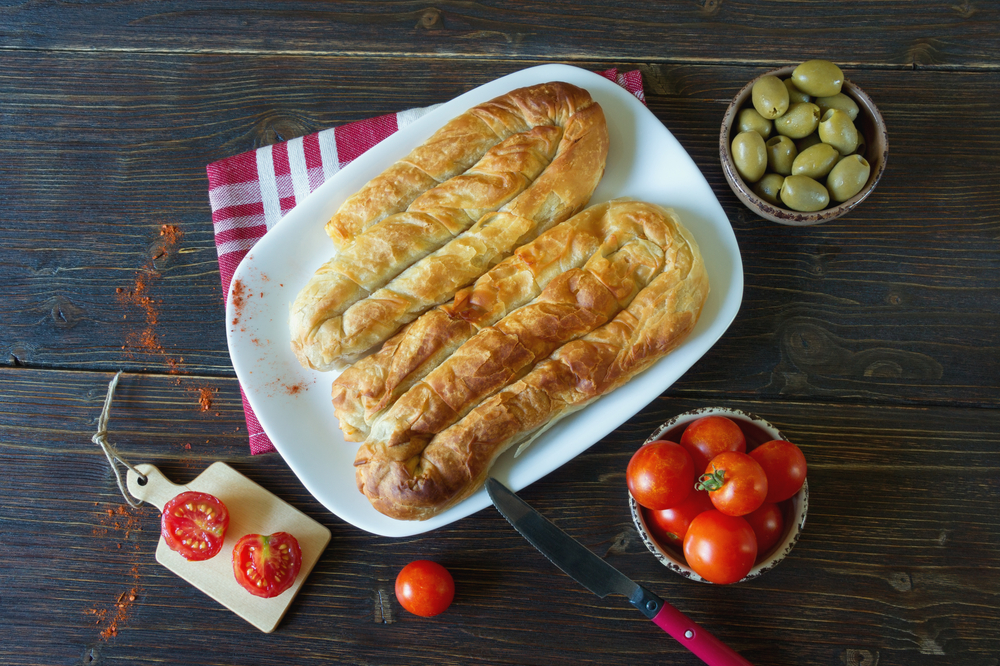
Security
Theft is the Albanian scourge. Cell phones, cameras, and cars are the most common targets for thieves. The Ministry of Foreign Affairs also warns against stealing documents.
Albania is a country with a high percentage of Muslims, and although it is open to tourists, the seductive clothing and provocative behavior of tourists can be badly perceived by locals.
You should also be careful of strangers inviting you to lunch or dinner. It is quite common to encounter child beggars in Tirana – an attempt to engage in any interaction will be perceived as an incentive to keep asking for money.

What to be afraid of in Tirana?
Traffic in Albania is definitely not up to European standards. However, you should remember that the communist dictator Hoxha forbade the ownership of private cars, so the rules of the road did not appear in the country until after the overthrow of communism. Therefore, you must be careful when driving or crossing the streets.
If you are going on a trip out of town, you should find out in advance where the suburban buses leave from. There are several stops in the city, some unmarked and located in “bizarre” places.
Tirana has its own train station, but the condition of the rolling stock is terrible. Slow, dilapidated trains often end up with a hole in the wall. On the other hand, a trip on such a vehicle can be a real attraction.

Best places to visit in Tirana
See what you need to do in Tirana to see that it is not a dull, gray and inconspicuous city! Here is a list of 18 sights to see in the Albanian capital.

1. Start at Skanderbeg Square

Skanderbeg Square is the central point of the city. The concrete square has only recently become a pedestrian square and has quickly become a popular place for evening strolls. An 11-meter tall statue of Skanderbeg on a horse unveiled on the 500th anniversary of the national hero’s death, towers above the square, with the Albanian flag flying proudly.
Around the square are also various important buildings: the Palace of Culture, which now houses, among others, the opera and the ballet, the monumental National Bank and the National Museum with a huge patriotic mosaic (now under reconstruction) that shows Albanians in their moments of triumph. There is also a historic mosque and a clock tower. Numerous modern skyscrapers are being built in the second line.
During the day the square is rather deserted, but in the evening it is teeming with life. The Skanderbeg Monument, like the Rotunda in Warsaw or Mickiewicz in Krakow, is a popular meeting place. Under the columns of the Palace of Culture and Science there are several modern restaurants and bars. So you can sit in one of them, order a glass of wine and watch the life going on in the square.
2. Explore the historic Et’hem Bay Mosque and the clock tower

According to many, the Et’hem Bey Mosque is the most beautiful building in Tirana. Its construction was started in the 18th century by Moll Bej and completed in 1823 by his son Hadji Etem Bej. In the past it was one of the building blocks of the historic center of the city. There was a large bazaar opposite, and next to it, to the east, the mosque of Suleiman Pasha, which was destroyed during World War II.
The Ethem Bey Mosque survived the atheist revolution of the 1960s because it was considered a cultural monument. In 1991, a large demonstration took place under it, which is considered the beginning of the end of Hoxha’s communist regime. The demonstrators demanded the freedom to express their religion.
Today the temple is again a place of prayer, but at certain times it is open to the public. It is worth a look because the interior is decorated with rich frescoes and stucco.
Right next to it is the clock tower (Kulla e Sahatit) from 1822, whose construction was financed by the wealthiest families of Tirana. In the 20th century it was raised to 35 meters and a large German clock was installed on it. Until 1970 it was the tallest building in Tirana!
3. Learn about the country’s history at the National History Museum

The museum building in Skanderbeg Square is known primarily for its huge 400 square meter facade mosaic. It shows 13 Albanians from different periods of the country’s history.
The interior of the museum displays various collections from the Illyrian, Greek, Roman and Ottoman periods. On the first floor there is also an exhibition dedicated to the victims of communism, and on the second floor there are memorabilia from the struggle for independence, the monarchy of Zog I and the Second World War. In 1996, an exhibition depicting the period of Hoxha’s Communist dictatorship and an exhibition dedicated to Mother Teresa of Calcutta were opened.
Practical information: The museum is open Tuesday through Saturday from 9 a.m. to 4 p.m., and Sundays from 10 a.m. to 3 p.m. Admission is 400 ALL and tickets can be purchased on site or online at the museum website.
4. Go down to the bunker in Bunk’Art 1

Bunk’Art is an initiative supported by the Albanian nongovernmental organization Quednra Ura (Centrum Most), which uses Albania’s historical resources and creates various exhibitions and art installations in them to show the country’s complex history and give Albanians a chance to deal with their problems.
An example of such activity is the opening of a museum in a huge nuclear bunker built in 1972-1978 for dictator Enver Hoxha and his high dignitaries. This facility has an area of 2,685 m2, 5 underground floors, 106 rooms and is very impressive in itself.
The museum consists of two expositions: Historical and Museum, which interpenetrate into each other. The first deals with the years 1939-1944, that is, the period of the Italian and German occupation. The two halls also show the origins of the Communist system and an outline of the history of propaganda and the system of violence from 1945-1990.
In the museum exhibition you can see reconstructed living interiors and outbuildings located in the asylum and learn about individual issues from the history of the communist state, for example in the field of education or sports. You will also find information about the project of building several hundred thousand bunkers, the remains of which are the most characteristic element of the Albanian landscape.
Perhaps the highlight of the exhibition is Enver Hoxha’s study, which consists of just four rooms: an office, a bathroom, a bedroom and the room of his personal secretary. Visitors can also admire the huge hall where the Albanian parliament and the central organs of the Communist Party could meet, if necessary.
Practical information : Bunk’Art 1 is located in the Film Studio area, about 5 kilometers from the city center. The lower station of the Dajti Ekspres cable car is also nearby. The museum is open Wednesday through Sunday from 9:00 to 16:00, admission costs 500 ALL. On a tour you should allow about 2-3 hours. It is worth taking warmer clothes, because it can be quite cold in the underground interiors.
5. See the exhibition on persecution in Bunk’Art 2
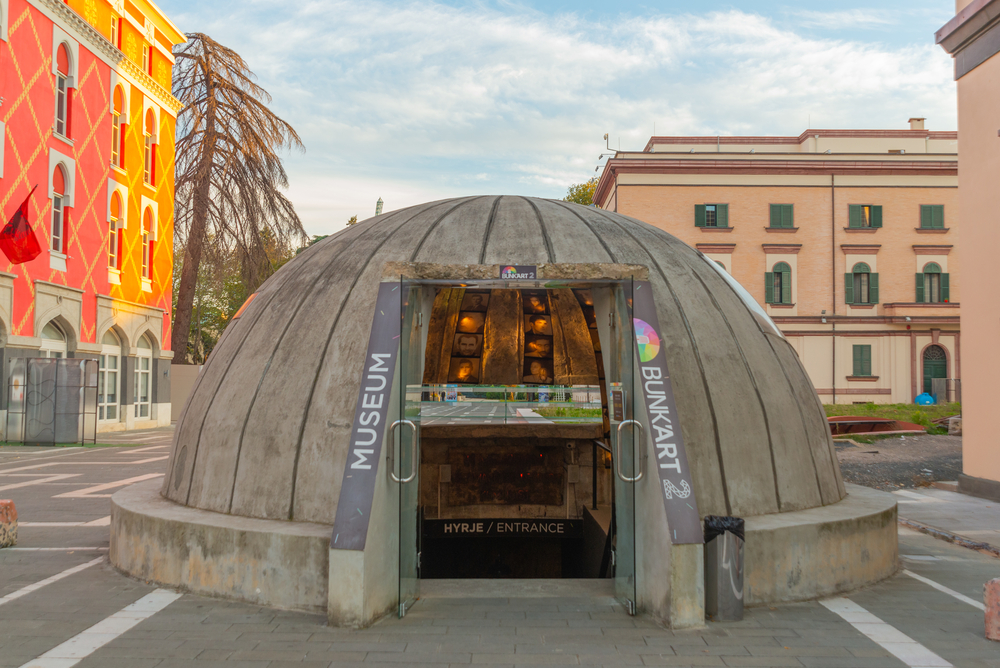
The second museum, Bunk’Art 2, was created in the heart of the city, just a few steps from Skanderbeg Square. In the secret, underground part of the former Interior Ministry, in 24 rooms, there is an exhibition presenting the history of the Interior Ministry, political police, surveillance tools, and forms of persecution during the rule of Enver Hoxha. There is also a small gallery of post-totalitarian art.
Although, of course, the modern, video-museum form of the exhibition will not appeal to everyone, it is worth a visit because it shows an important and complex fragment of Albanian reality from the not so distant past.
Practical information : The museum is open Monday through Thursday from 9:00 am to 5:00 pm and Friday through Sunday from 9:00 am to 6:00 pm. Admission costs 500 ALL (you can also buy a combined ticket for Bunk’Art and Bunk’Art 2 which costs 800 ALL). You should allow about 1.5 hours for sightseeing.
6. Visit the hipster neighborhood of Blloku
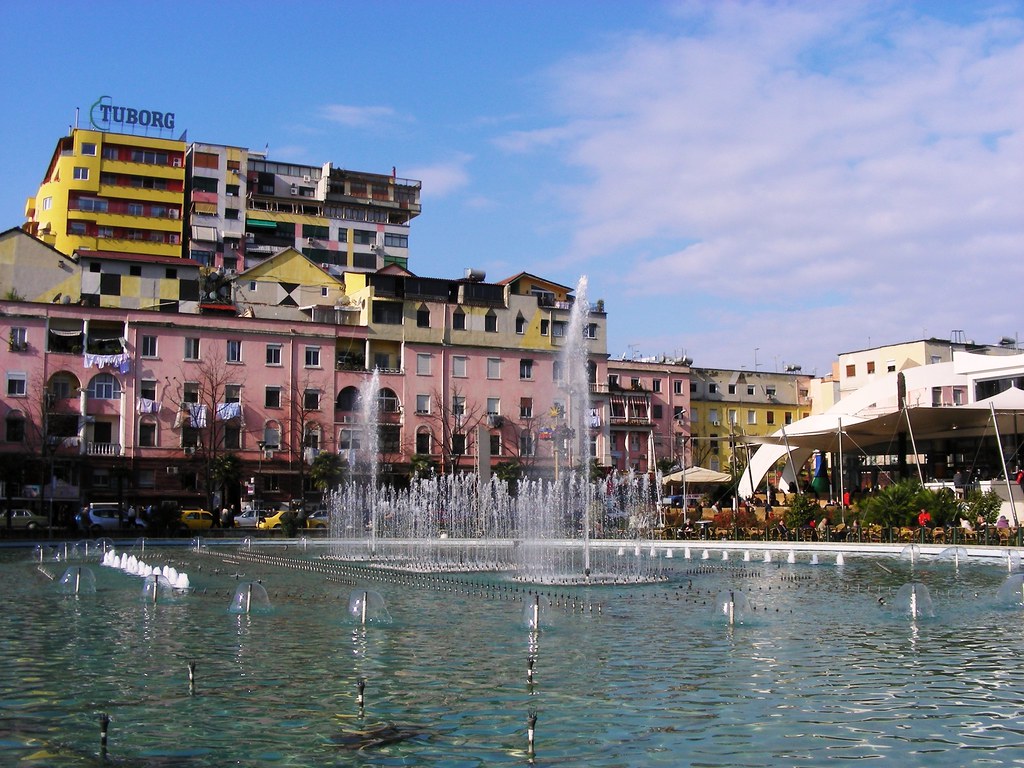
Blloku was once the neighborhood of Communist dignitaries and was inaccessible to mere mortals. Today we can safely say that it is the most hipster neighborhood of Tirana, where life boils from morning till night. It’s full of cafes and restaurants offering cuisines from almost all over the world. There’s no shortage of clubs, luxury stores, and boutiques. The Blloku area has a unique and friendly atmosphere and its popularity (also among residents) is proved by the fact that the prices of apartments here are higher than in the heart of the Albanian capital.
7. Find your favorite road sign in Tirana

Walking around the neighborhood of Blloku, you can notice the characteristic road signs. They appeared in the city on the occasion of the 100th anniversary of Tirana becoming the capital of Albania, but unfortunately they are copies of works by the French artist Cletus Abraham, also known as “Le Clé”, who lives in Florence. If you’ve been to Italy, they may look familiar to you! According to information found online, the images were used without the author’s consent.
The city’s advertising department clearly needs copyright training, since Tirana’s commercial is also clearly inspired by London’s advertising material.
8. See how the pyramid, the symbol of Tyranny, changes

The characteristic concrete pyramid is an undeniable symbol of Tirana. It was built in the late 1980s by the dictator’s daughter and his son-in-law, who wanted to celebrate the death of Enver Hoxha. Anyway, his mausoleum was to have been built there, but when the pyramid was opened to the public, it housed only a museum displaying his achievements. After the fall of communism, the Pyramid served as a conference center, then there were plans to build a movie theater and theater there. From time to time there were voices calling for the complete demolition of the pyramid, but residents strongly protested against such a decision. Over the years, it has forever become part of the cityscape, and has become a favorite meeting place for townspeople.
At the beginning of 2021, work began on transforming the pyramid into an educational and cultural center for young people. The author of the project is the Dutch architectural studio MVRDV.
9. See the panorama of Tirana
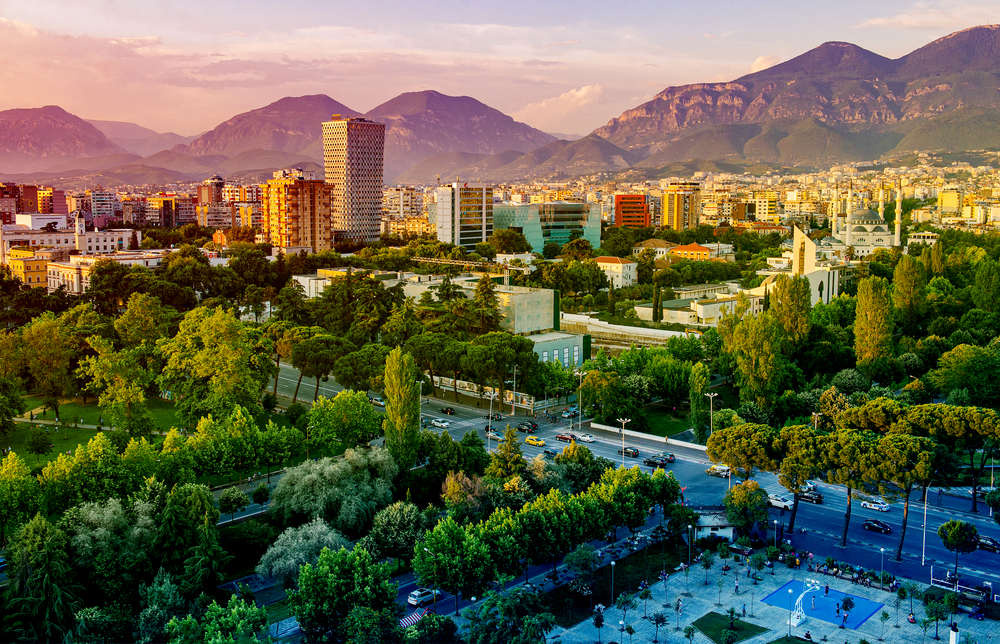
You can also admire the panorama of the city. However, there are not many such points in Tirana, although looking at the skyscrapers being built at every turn, this will probably change soon. Until recently, the top of the Sky Tower Hotel in the Albanian capital had a revolving bar – and you will still find this information in many guidebooks. However, the subject is no longer relevant, as the bar was closed some time ago. The revolving structure is in need of repair, and it is unknown when it will reopen to the public. An alternative is the restaurant on the upper floors of the Plaza Hotel Tirana.
In September 2021 it was open only in the evenings, but soon the owners planned to launch a breakfast offer. The hotel is close to Skanderbeg Square, so you can see the entire city center and beyond!
10. Take advantage of Albania’s only gondola lift
Tirana is surrounded by mountains. In the “Film Studio” area, a little away from the city center, the gondola elevator “Daity Express”, over 4 km long, which allows you to reach the nearby peaks at about 1230 m above sea level, has been built. 20 minutes and the journey is an unforgettable experience!
Dajti Tower Belvedere Hotel and Balkoni Dajti restaurant are located in the upper station. There is also a small garden, a children’s playground and a mini golf course. The best thing to do is to come here in the evening, sit on one of the benches and admire the sunset over Tirana!
Practical information : The cable car operates every day from 9:00 to 19:00, except Tuesday. Also, it may be closed in case of adverse weather conditions, and then information about this will appear on social networks. A round-trip ticket costs 1,000 lek.
You can also get to the summit by car, taking the winding road through the forest.
11. Look for the most colorful buildings in Tirana

What is sure to catch your eye during a walk around Tirana are the colorful facades of the houses and buildings. It owes it to the former mayor of the city, Edi Rama, an artist by training, who thus wanted to revive Tirana a little and restore its cheerful appearance. Lacking funds to repair the city’s infrastructure, he ordered the gloomy Communist apartment buildings to be repainted in bright colors. As a result, residents began to slowly reclaim the urban space appropriated by the authorities during Enver Hoxha’s brutal regime.
You will find colorful buildings almost everywhere, although it is best to head from Skanderbeg Square toward Wilson Square or toward the Shesha Karl Topia traffic circle.
12. Find your favorite mural

In addition to colorful buildings, you’re sure to notice many murals in Tirana, which have become a good part of the cityscape. Since 2018 (intermittently), the annual MurAL festival is held here, in which artists from all over the world create giant paintings on buildings. Walking around the city, it’s worth checking out the colorful works of street art.
13. Walk across the historic Kozhevnikov Bridge
On one of the busiest streets of the city is the unexpected 18th-century stone Bridge of Leathermen (Ura e Tabakëve). It used to be located at the entrance to Tirana and was part of the Way of Saint George, which connected it to the eastern highlands, where all sorts of food and livestock were supplied.
Where did the name come from? The bridge crossed River Lane, near which there were numerous butcher and tannery shops. In Albania, the professions of butcher and tanner were related and performed by the same people from certain families. They were called snuffers. The road in the town, the square and the bridge itself were called Rruga-e-Tabakeve, which means Bridge of Leathermen.
When the course of the Lane River was changed in the 1930s, the bridge lost its significance. It is now one of the city’s most important monuments. It was restored in the 1990s and is now used only by pedestrians.
14. Go to the market in Pazari and Ri
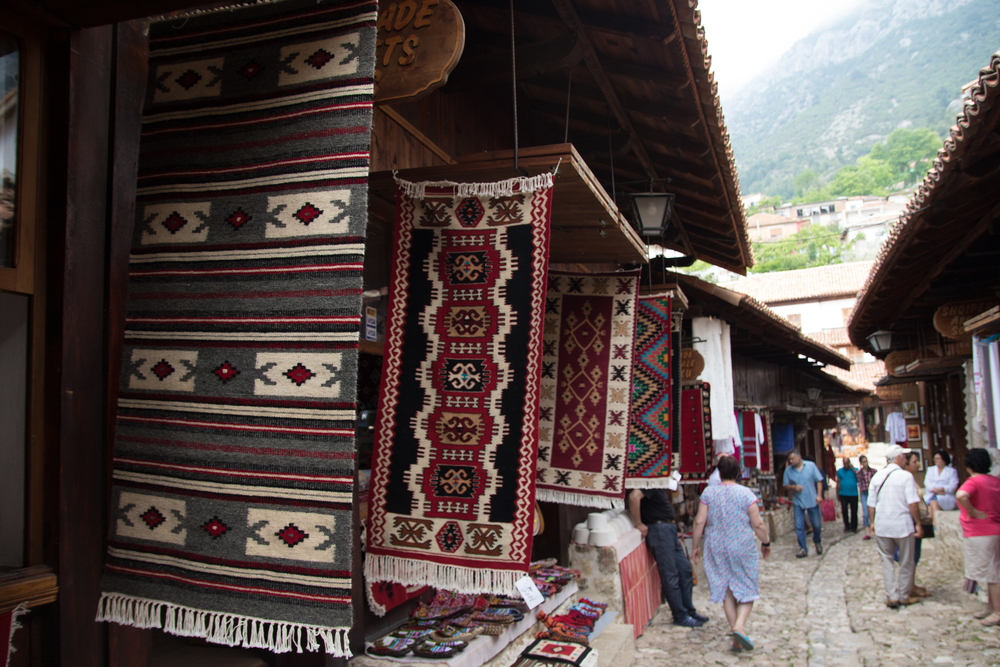
The New Bazaar (Pazari i Ri) is one of the oldest neighborhoods of Tirana, recently renovated. Its name comes from the market located here. Farmers from all over the country sell their products here – not only fresh fruits and vegetables, but also different sorts of cheese, honey and other regional preserves. There are also several antique stalls. Also around them are various souvenir boutiques and many restaurants of Albanian cuisine. This is a place worth checking out, if only for a moment!
15. Visit the ruins of Tyrann Castle
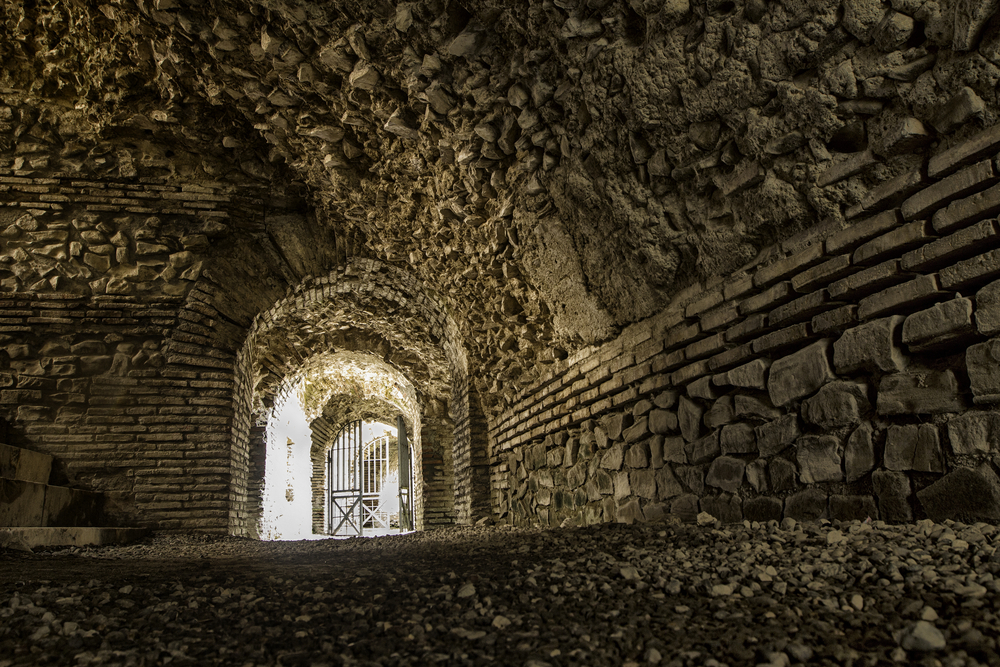
Justinian’s Fortress is a cultural heritage monument of Albania, which dates back to 1300 and is a remnant of the Byzantine era. This castle was once the main fortress of Tirana. The main east-west and north-south roads crossed here, forming the heart of the city. Nowadays the fortress walls are the culinary and cultural center of the capital. There are many restaurants serving traditional Albanian food, as well as galleries and artisan boutiques. Rruga Murat Toptani leading to the castle is also one of the favorite walking streets of the locals, along which there are pleasant cafes.
16. Find a piece of the Berlin Wall
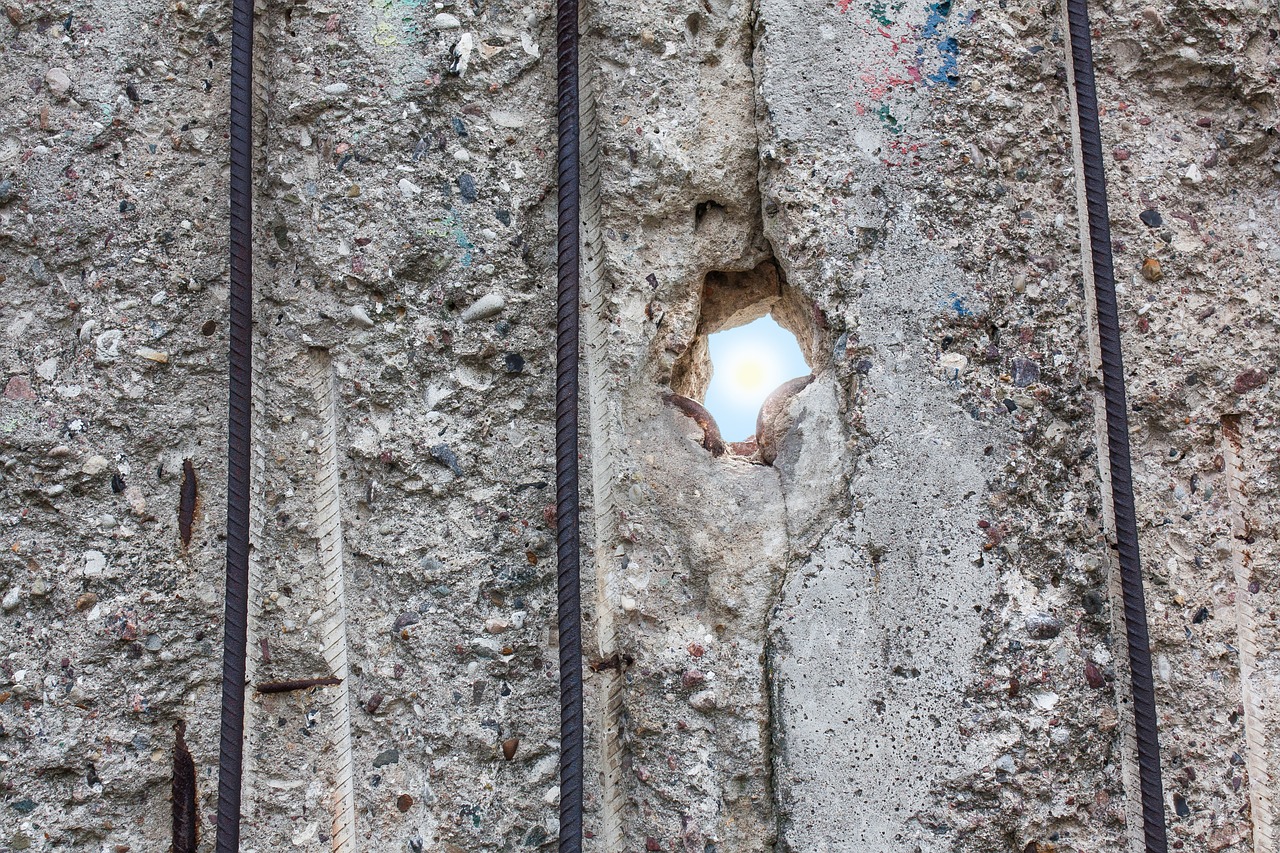
In 2013, an art installation commemorating the victims of the Communist regime opened in a small park on Desmoret e Kombit Boulevard. In addition to a mushroom bunker and concrete pillars from the Spaku mine, where many opponents of the Communist regime were imprisoned in penal labor camps, there is also a fragment of the Berlin Wall donated by the city of Berlin.
The installation is called Post Bllok and is located at the entrance to the Blloku neighborhood, once inaccessible to ordinary breadwinners. Its authors are the writer and former political dissident Fatos Lubonya and the artist Adrian Isoufi.
17. Relax by the lake in Park y Madh

In the southern part of the city there is a huge park of 289 hectares located on an artificial lake. It is the green lungs of Tirana and one of those places in the capital where you can really relax. The territory of the park is covered with more than 120 species of trees. Nearby there is a botanical and zoological garden. It is an excellent recreation area that attracts runners, cyclists and pedestrians.
At the entrance from the university, you can see the Chopin Monument. On the other side, entering from Rruga Sami Frasheri Street, do not miss one of the best restaurants in the city. The Mullixhiu restaurant serves modern dishes inspired by traditional Albanian cuisine. The chef is Bledar Kola, who worked at the famous Danish restaurant NOMA.
18. Admire the antique mosaic
One of the most unusual sights in Tirana are the mosaics that were part of the buildings of the first century AD. It was probably replaced around the third century by a complex of buildings divided into agricultural (villa rustica) and residential (villa urbana). A paleochristian basilica was also built here in the fourth and fifth centuries.
Today, Villa Rustica and the Basilica are known as the Mosaic of Tirana and are the only archaeological site in the city. They were accidentally discovered in 1972 during the construction of nearby residential buildings. The dominant motifs in the mosaics are geometric and plant motifs – triangles, rosettes and stylized scythes, and what is considered the main part of the temple can be seen as the symbol of a fish, scythe and cross. In addition to the mosaic floor, fragments of walls, tiles and ceramics have also been excavated.
Finish your trip in the surroundings of Tirana
Tirana is a good base for exploring the rest of the country. From here you can go to historic Kruja or Elbasan. Also popular are trips to the sea in Durres or to the nearby mountains.
